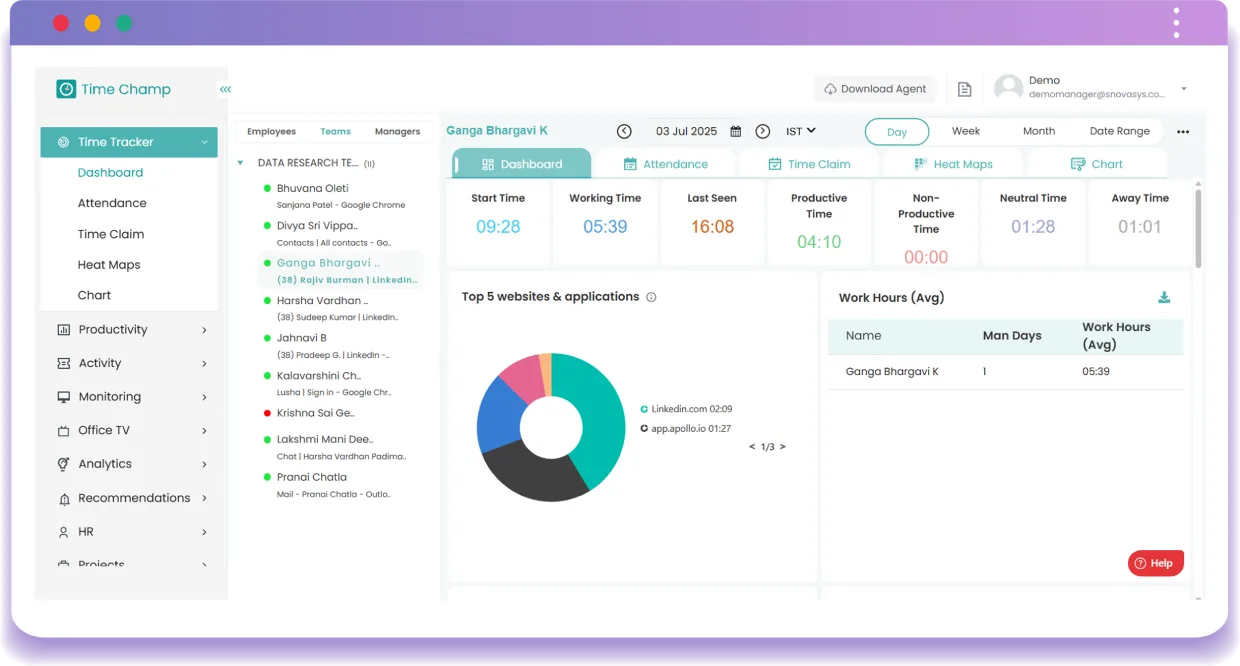The average salary in India ranges between ₹25,000 ($291.50) and ₹32,000 ($373.11) per month, translating to an average salary in India of ₹3,00,000 ($3497.95) to ₹3,84,000 ($4477.38) per year, according to Salary Expert. But is that enough to match rising living costs, career expectations, or global income standards? Many individuals find themselves struggling with unclear salary benchmarks, poor financial planning, or unrealistic job expectations. This article breaks down the data to help you better understand where you stand and how to move forward.
What is the Average Salary in India
The average salary is the amount that is left when you add the total wages of all employees in a group and divide that by the number of employees. It tells you the normal amount of income someone in that group can expect.
Example:
Let’s say there are 5 individuals, and their monthly earnings are:
₹10,000
₹20,000
₹30,000
₹40,000
₹50,000
To get the average salary, first, total all the income.
₹10,000 + ₹20,000 + ₹30,000 + ₹40,000 + ₹50,000 = ₹1,50,000
After that, divide the sum by the number of people—5 in this case.
₹1,50,000 ÷ 5 = ₹30,000
So, the average monthly salary in this group is ₹30,000($349.80).
This figure shows the usual income in the group, but very high or low pay can change the average.
1. Average Salary in India
According to Salary Expert, the average monthly salary in India ranges between ₹25,000($291.50) and ₹32,000 ($373.11), translating to an average annual salary in India of ₹3,00,000 ($3497.95) to ₹3,84,000 ($4477.38). It covers several fields and is shaped by education, experience, industry, and geographical position.
2. Median Salary in India
The median salary in India is ₹27,300($318.31) per month, meaning half the workforce earns less, while the other half earns more. Using this data gives a realistic picture of earnings, unlike average salary figures that are often affected by those who earn very high salaries.
It exposes a significant difference in income across the country. Despite good wages for the top sectors and office jobs, most workers in rural settings and low-skilled fields are paid much less. The difference between the median and average salary shows the increasing separation among workers in India.
3. Salary Range in India
Salaries in India exhibit a wide spectrum, with the monthly earnings ranging from ₹8,080($94.21) to ₹1,43,000($1667.36). This reflects the fact that people in different professions and industries have many economic skills and levels of experience.
4. Minimum Wage in India
The Indian Parliament introduced the Minimum Wages Act in 1948 to ensure fair pay for workers across various sectors. It requires employers to pay minimum wages to all employees, skilled or unskilled, engaged in scheduled employment listed under the Act. However, if an industry employs fewer than 1,000 workers in a state, the minimum wage may not apply there.
Minimum wages in India are based on each worker’s expertise, the type of industry, and the region they are in. These rates are periodically revised by the Central Government. At present, unskilled workers get ₹783 ($9.13) per day, but highly skilled workers earn ₹1,035 ($12.07) per day.
Monthly minimum wages fixed by the Central Government are as follows:
- Unskilled workers: ₹20,358 ($237.37)
- Semi-skilled workers: ₹22,568 ($263.14)
- Skilled workers: ₹24,804 ($289.21)
- Highly skilled workers: ₹26,910 ($313.77)
5. Annual Salary Increment in India
Salary increments in India are expected to average 8.8% in 2025, a slight dip from 9% in 2024, as around 75% of companies plan to either maintain or reduce last year’s hike levels. Although the pace of salary growth is moderating, the best performers are likely to get higher pay. Promotion rates are expected to stay steady, and despite easing attrition rate, almost 80% of companies again plan to grow, paying more attention to rewards based on the performance and uniqueness of their employees.
Factors Affecting & Salary Comparisons in India
Salaries in India are influenced by various factors, including education, experience, age, gender, profession, and location. Understanding these elements helps explain how the nation’s income is distributed.
1. By Education
Earning power and the salary range in India are both strongly shaped by a person’s educational qualifications. Advanced education is often closely linked to greater earning potential, showing how advanced skills and knowledge are valued in the job market.
| Educational Level | Average Annual Salary (INR) | Average Annual Salary (USD) |
|---|---|---|
| Doctorate Degree | 2,752,407 | 32,092.63 |
| Master’s Degree | 2,126,111 | 24,790.12 |
| Bachelor’s Degree | 1,697,592 | 19,793.66 |
| High School | 1,153,703 | 13,452.00 |
| Below High School | 1,112,499 | 12,971.56 |
Source: Forbes
2. By Experience
Income in India differs from one profession to another.
| Experience | Average Salary Progress (%) |
|---|---|
| 2 to 5 years | +32% |
| 5 to 10 years | +36% |
| 10 to 15 years | +21% |
| 15 to 20 years | +14% |
| 20+ years | +9% |
Source: Lemonn.in
3. By Age
In India, average monthly income depends not just on job title but also on age, as it often reflects experience and career growth. As experience adds up, so does your value, and earning potential tends to rise. In the early stages of a career, average income per person in India tends to be modest but grows steadily as people move ahead professionally.
This data shows how work experience and age influence salary and provided information about salary trends in India in the year 2025. It gives a helpful overview of the average income in India amongst people of different ages.
Here’s a look at the average salary range by age in India:
| Age Range | 10% | 75% | 90% | Average Monthly Salary (INR) | Average Monthly Salary (USD) |
|---|---|---|---|---|---|
| <24 | 3,900 | – | 11,937 | 5,905 | 68.85 |
| 25–34 | 3,900 | 14,400 | 25,181 | 10,780 | 125.69 |
| 35–44 | 3,900 | 18,444 | 33,639 | 13,777 | 160.64 |
| 45–54 | 3,900 | 15,971 | 30,678 | 11,932 | 139.13 |
| 55+ | 3,900 | 13,871 | 25,002 | 10,365 | 120.85 |
Source: Lemonn.in
4. By Gender
Global Capability Centers (GCCs) have an average pay gap of 16.4% between senior roles, showing a key challenge. While more women are now in early and mid-level roles, they still earn less than men in higher management or leadership positions.
As the GCC region’s sector develops and its workforce increases, the gender pay gap continues to exist in different industries, which mainly prompts concerns about inclusion and fairness.
| Gender | Average Annual Salary (INR) | Average Annual Salary (USD) |
|---|---|---|
| Male | 2,080,605 | 24,259.53 |
| Female | 1,615,322 | 18,834.40 |
Source: Forbes
5. By Industry
Salaries fluctuate from one profession to another in India.
| Industry | Average Annual Salary (INR) | Average Annual Salary (USD) |
|---|---|---|
| Information Technology | 900,000 | 10,493.86 |
| Banking & Finance | 800,000 | 9,327.87 |
| Healthcare | 600,000 | 6,995.91 |
| Education | 400,000 | 4,663.94 |
| Manufacturing | 500,000 | 5,829.92 |
| Retail | 400,000 | 4,663.94 |
Source: Chegg
6. By Location
This table lists the average monthly earnings of Indians living in different states.
| States / UTs | Average Monthly Salary (INR) | Average Monthly Salary (USD) |
|---|---|---|
| Uttar Pradesh | 20,730 | 241.71 |
| West Bengal | 20,210 | 235.65 |
| Maharashtra | 20,110 | 234.48 |
| Bihar | 19,960 | 232.73 |
| Rajasthan | 19,740 | 230.17 |
| Madhya Pradesh | 19,740 | 230.17 |
| Tamil Nadu | 19,600 | 228.53 |
| Karnataka | 19,150 | 223.29 |
| Gujarat | 18,880 | 220.14 |
| Orissa | 18,790 | 219.09 |
| Andhra Pradesh | 18,520 | 215.94 |
| Jharkhand | 18,430 | 214.89 |
| Kerala | 18,290 | 213.26 |
| Punjab | 18,120 | 211.28 |
| Assam | 17,860 | 208.24 |
| Chhattisgarh | 17,570 | 204.86 |
| Haryana | 17,330 | 202.07 |
| Uttranchal | 17,140 | 199.85 |
| Delhi | 17,100 | 199.37 |
| Jammu and Kashmir | 17,010 | 198.33 |
| Tripura | 16,760 | 195.42 |
| Himachal Pradesh | 16,640 | 194.02 |
| Manipur | 16,420 | 191.45 |
| Meghalaya | 16,260 | 189.59 |
| Nagaland | 16,120 | 187.96 |
| Pondicherry | 15,620 | 182.13 |
| Arunachal Pradesh | 15,590 | 181.78 |
| Goa | 15,540 | 181.19 |
| Mizoram | 15,390 | 179.44 |
| Sikkim | 15,130 | 176.41 |
| Chandigarh | 14,940 | 174.20 |
| Dadra and Nagar Haveli | 14,630 | 170.58 |
| Andaman and Nicobar Islands | 14,350 | 167.32 |
| Daman and Diu | 14,290 | 166.62 |
| Lakshadweep | 14,260 | 166.27 |
Source: Cleartax
What is the Cost of Living in India?
Understanding the connection between salaries and living costs is essential for financial planning and assessing the quality of life in various regions of India. The table below shows the cost of living in various parts of India.
| Expense Category | Average Monthly Cost (INR) | Average Monthly Cost (USD) |
|---|---|---|
| One-bedroom apartment (city center) | 17,000 | 198.22 |
| One-bedroom apartment (outside city center) | 10,000 | 116.60 |
| Utilities (electricity, heating, cooling, water, garbage) | 3,500 | 40.81 |
| Internet (60 Mbps or more, unlimited data) | 700 | 8.16 |
| Monthly public transport pass | 850 | 9.91 |
| Groceries (monthly for one person) | 4,000 | 46.64 |
| Dining out (mid-range restaurant, monthly) | 2,500 | 29.15 |
| Fitness club membership | 1,500 | 17.49 |
| Total Estimated Cost (excluding rent) | 12,050 | 140.50 |
| Total Estimated Cost(including rent) | 22,050 – 29,050 | 257.10 – 338.72 |
Source: Numbeo
This table provides a snapshot of the typical monthly expenses one might incur while residing in these urban centers. Accommodation in cities like Mumbai and Bangalore tends to cost more, while housing in cities like Kolkata and Ahmedabad is more affordable.
| City | Accommodation (USD) | Groceries (USD) | Transportation (USD) | Utilities (USD) | Entertainment & Shopping (USD) | Education & Daycare (USD) | Housemaid (USD) | Wi-Fi (USD) | Miscellaneous (USD) |
|---|---|---|---|---|---|---|---|---|---|
| Bangalore | 81.62 – 349.80 | 34.98 – 174.90 | 17.49 – 81.62 | 13.99 – 40.81 | 58.30 – 116.60 | 69.96 – 279.84 | 23.32 onwards | 11.66 onwards | 23.32 – 93.28 |
| Delhi | 58.30 – 699.59 | 23.32 – 174.90 | 11.66 – 81.62 | 7.00 – 69.96 | 46.64 – 116.60 | 34.98 – 233.20 | 58.30 onwards | 8.16 onwards | 34.98 – 139.92 |
| Pune | 174.90 – 291.50 | 23.32 – 46.64 | 11.66 – 34.98 | 23.32 – 34.98 | 34.98 – 58.30 | 34.98 – 174.90 | 23.32 onwards | 9.3 onwards | 23.32 – 93.28 |
| Mumbai | 69.96 – 466.39 | 17.49 – 291.50 | 11.66 – 34.98 | 23.32 – 34.98 | 17.49 – 81.62 | 34.98 – 139.92 | 29.15 onwards | 5.8 onwards | 58.30 – 93.28 |
| Ahmedabad | 93.28 – 291.50 | 46.64 – 81.62 | 11.66 – 58.30 | 3,000 – 8,000 | 34.98 – 93.28 | 93.28 – 116.60 | 23.32 onwards | 5.83 onwards | 23.32 – 69.96 |
| Hyderabad | 46.64 – 443.07 | 11.66 – 128.26 | 11.66 – 46.64 | 13.99 – 40.81 | 46.64 – 93.28 | 34.98 – 209.88 | 17.49 onwards | 11.66 onwards | 23.32 – 93.28 |
| Chennai | 69.96 – 466.39 | 23.32 – 116.60 | 11.66 – 17.49 | 23.32 – 58.30 | 23.32 – 69.96 | 46.64 – 116.60 | 23.32 onwards | 4.65 onwards | 23.32 – 93.28 |
| Kolkata | 93.28 – 349.80 | 17.49 – 34.98 | 5.83 – 29.15 | 11.49 – 81.62 | 2.33 – 11.66 | 34.98 – 116.60 | 23.32 onwards | 4.65 onwards | 23.32 – 93.28 |
Source: Godigit
Average Salary in India vs the World
Looking at how India’s salaries compare with those around the world reveals the country’s economic profile and the purchasing power of its workforce. The International Labour Organization's (ILO) Global Wage Report 2024–25 analyzes and publishes wage information for each country's income group.
1. Average Salaries in Developed Countries
| Country | Average Salary Per Month (USD) | Comparison to Average Salary in India (in %) |
|---|---|---|
| United Kingdom | 8,092 | 180% |
| United States | 7,900 | 179% |
| Norway | 5,696 | 172% |
| Germany | 4,493 | 165% |
| Austria | 4,470 | 165% |
Source: Global Wage Report
2. Average Salaries in Transition Economies
| Country | Average Salary Per Month (USD) | Comparison to Average Salary in India (in %) |
|---|---|---|
| Georgia | 2,191 | 134% |
| Russia | 1,392 | 106% |
| Albania | 923 | 73% |
| Kazakhstan | 903 | 71% |
Source: Global Wage Report
3. Average Salaries in Developing Countries
| Country | Average Salary Per Month (USD) | Comparison to Average Salary in India (in %) |
|---|---|---|
| Thailand | 2,949 | 149% |
| Philippines | 875 | 69% |
| Vietnam | 748 | 54% |
| Egypt | 587 | 31% |
| Pakistan | 508 | 17% |
Source: Global Wage Report
Top Outsourcing Industries in India
India’s position as a top outsourcing destination, driven by industries focused on innovation, cost reduction, and a large skilled workforce. As of 2025, the following sectors are experiencing the strongest growth in outsourcing activities across the country:
1. Information Technology (IT) Services
IT outsourcing continues to grow in India, making up about 60% of the country’s service exports. In 2024, the industry is predicted to achieve $11.04 billion, growing by 13.52% each year, which could bring it to $20.81 billion in 2029. Major companies like Tata Consultancy Services (TCS), Wipro, and HCL Technologies continue to lead, offering services ranging from software development to cloud computing and AI solutions.
2. Business Process Management (BPM)
At first, the BPM area in India was known as Business Process Outsourcing (BPO), but today it covers customer experience management, finance and accounting, and human resources as well. The top 50 BPM providers in India experienced growth rates of 4.5% to 5.5%, with the sector's value exceeding $300 billion globally. Companies like TCS, BPM, and WNS Global are at the forefront, integrating AI and automation to enhance service delivery.
3. Global Capability Centres (GCCs)
India now attracts multinational companies by acting as a Global Capability Centre for operations, research and development, and innovation. The GCC market in India is projected to grow from $64.6 billion in FY2024 to between $99 billion and $105 billion by 2030. The number of companies with GCCs in India is expected to rise to 2,100–2,200, employing about 2.5 million to 2.8 million individuals.
4. Healthcare and Pharmaceutical Outsourcing
Healthcare and pharmaceutical companies are increasingly relying on India for medical billing, telemedicine, and support in research. The growth of healthcare technology in India to over INR 1.8 trillion created a need for Indian firms to outsource IT services for electronic medical records, data analytics, and patient interaction platforms.
5. Manufacturing and Electronics
The electronics manufacturing outsourcing business is growing in India. Apple is making a big move to expand its manufacturing in India, having invested $1.5 billion in a display module plant near Chennai and $450 million in a semiconductor assembly unit in Uttar Pradesh. Such progress supports India’s approach to grow as a manufacturing power and spread out its supply chains.
Why Time Champ is the Perfect Fit for Outsourcing Teams?
Time Champ is a comprehensive productivity and time tracking software developed to help simplify how companies operate and manage their employees, particularly those working remotely and outsourced workers. It offers time tracking, task monitoring, and real-time insights merged into a single effective solution that makes everyone stay aligned and responsible, regardless of location. Some of the challenges that are encountered by the outsourcing teams are: scattered communication, no visibility, irregular working hours, and slow updates. Time Champ solves these issues with clear, structured tools:

1. Real-Time Activity Monitoring
It is effortless to manage outsourced teams when you have live activity insights with Time Champ. It displays precisely what is being worked on, as well as which apps and websites are being used, divided into productive, non-productive, and neutral sections. This level of clarity helps managers understand how time is being utilized without the need for constant check-ins. It ensures accountability while supporting an open and informed work environment.
2. Automated Time & Task Tracking
Outsourcing relationships often depend on accurate billing and well-documented time logs. The automated tracking of Time Champ clocks all working hours without human intervention. It links time entries directly to tasks and projects, thus performance can be easily measured, and deliverables can be completed on time. This accuracy is especially critical for client-based work, where detailed reporting can strengthen trust and justify costs. Using accurate tracking, managers are in a position to balance the workloads and assign tasks in a more efficient manner to the team.
3. Centralized Dashboard
It is quite easy to get chaotic when managing numerous outsourced projects without a clear overview. Time Champ offers a centralized dashboard where all project data, team activities, timesheets, and reports come together in one place. Such a consolidated picture enables managers to be up to date with deadlines, spot underperforming areas, and react to changes promptly. It is easy to navigate through the clean interface that lets the user concentrate on the most important thing, which is to get work done without distractions and confusion.
With Time Champ, teams that outsource can maintain unity, remain productive, and account for roles across borders, time differences, and cultural gaps. It's more than just a tracker; it's your remote team's performance partner.
Conclusion
Understanding the average salary in India involves more than just numbers, it’s about recognizing the diverse influences that shape earnings across industries, roles, and regions. Since factors like education, experience, workplace location, and industry play a major role, this information is valuable for both career planning and developing effective pay strategies in business. As the job market evolves, staying informed about salary trends can empower smarter decisions and future-ready growth.
Frequently Asked Questions
A good salary in India varies depending on factors such as location, lifestyle, and personal financial goals. Usually, having a monthly income between ₹50,000 and ₹70,000 provides most urban families with a basic good life, enough money for savings, and additional money for other things.
Earning $25,000 USD annually translates to approximately ₹20.75 lakhs per year (based on an exchange rate of ₹83/USD). In contrast to the country’s average salary, which is ₹3.58 lakhs per year, this income is a lot more. One can enjoy premium living, private transport, and other comforts with a salary of this amount in many parts of India.
Jobs in the medical, technology, and executive management sectors often have the highest salaries in India. Specifically, roles such as doctors, IT professionals, and CEOs are known for high earnings.
Yes, a monthly salary of ₹70,000 is considered quite good in India. The average here is more than double the national average, allowing people to afford good housing, transportation, and save money as well. For people located in smaller cities or towns, this salary can allow for a very successful lifestyle.








